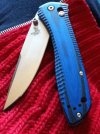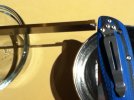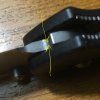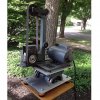- Joined
- Dec 10, 2008
- Messages
- 281
I made the grievous mistake of allowing a day laborer to use my Kershaw D2 Outcast. He chipped the holy Be-Jesus out of it. In all my life I have never chipped a knife this badly. I have been sharpening it with the coarsest stones I have to no avail. So I going to take a file to it. I am unsure if I should just sharpen it with the file or if I should just file the blade edge off down past the chips and than sharpen it. Any opinions suggestions. Please do not berate be for being a moron and letting a stranger use my knife. Believe me I know that.





